Restoring the Life Essence in Aotearoa (New Zealand)
By Jennifer Dowdell
Mātauranga, traditional Māori knowledge, is informing the restoration of mussels in Ōkahu Bay.
For the last decade, Richelle Kahui-McConnell, an ecological and social capital broker based in Auckland, New Zealand, has been working on ecological restoration projects with the Māori, the indigenous people of Aotearoa (New Zealand). She has focused on restoring the mauri, the life essence, of the land and sea through the integration of mātauranga, indigenous knowledge.
Her path to this calling has been a winding one. She began her career as an HIV nurse in Sydney, Australia, but the sorrow of the AIDS epidemic in the 90s took its toll and she yearned for a change. After first beginning a degree in landscape architecture she soon realized she was not interested in the design of ornamental gardens of “lavender and boxwood,” but she was drawn to the woods. When she entered the native bush, she felt a deep connection to the wairua, or spirit, of the place, and she recognized something in that experience that spoke to her. She said that all of a sudden, everything felt right, and she sensed the beginnings of what would continue to drive her work for the next decade: a desire to protect and restore the mauri of these landscapes. With that she switched to ecology. Besides this passion and connection she’d felt to the natural world, it was a personal calling. Kahui-McConnell is of both Māori and Samoan descent, so she shares a connection to the cultural, spiritual and linguistic foundations of her work and a deep desire to integrate the indigenous perspective and practices into ecological restoration and systems thinking.
Whakapapa and kaitiakitanga
Here it’s worth taking a few steps back to get a sense of the grounding of the Māori understanding of whakapapa, or lineage. This sense of connection, both to the natural world and to the community, begins for the Māori in their creation myth but continues into daily interactions, in things as common as an introduction between individuals.
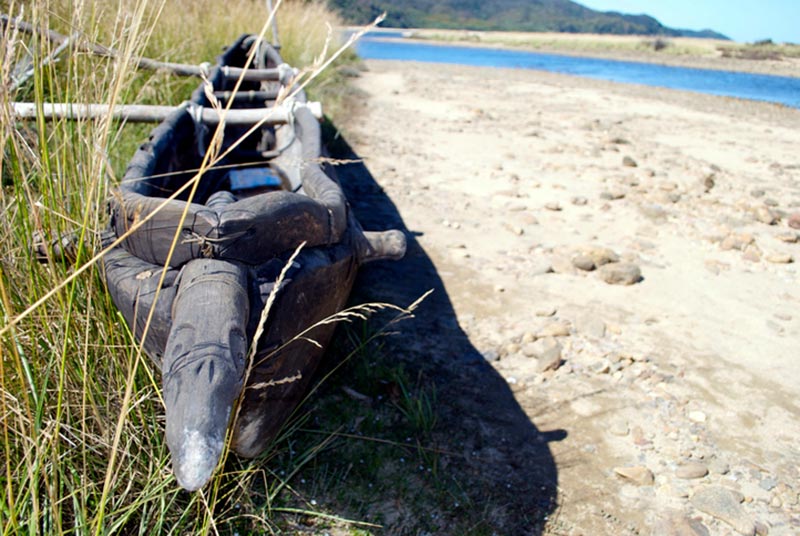
Tāne, the god of the forest, allowed light to flow into the world by the separation of Papatūānuku and Ranginui, Mother Earth and Father Sky. Tāne created man from earth and then gave him the breath of life, tihei mauri ora. Man, along with all creatures, therefore has a direct whakapapa to the earth, and a role of kaitiakitanga (guardianship), because of that lineage. To this day, Māori use a traditional greeting/introduction that references their heritage: from the waka (boat), that brought them to Aotearoa, to the maunga (mountain) and awa (river), of their people, to the marae (ancestral home/cultural hub), and the iwi, (tribe, with whom their people identify today). This mihi whakatau (formal greeting) not only identifies the place in the landscape where an individual is from, but the familial connections that could also be at play. To demonstrate this, Kahui-McConnell describes a recent instance where she met someone at a meeting and through this formal greeting that identifies ancestral connections, realized she was meeting a cousin. Beyond finding kinship in a supposed stranger, the mihi whakatau conveys the understanding of an innate connection to the land, a long history of intimately knowing and stewarding the mauri, of the whenua (land) and moana (sea). The Māori hold the ancestral knowledge of the patterns and rhythms of the natural world on Aotearoa. They call this indigenous ecological knowledge mātauranga.
Kahui-McConnell further explains that mātauranga can be thought of as having three levels of understanding. In the first level, for instance, one talks about the river (the pure scientific characteristics that we in western science might focus on) with its oxygen saturation, clarity, etc. In the second level, one talks to the river, understanding its flows, one feels safe collecting the kai (food) and washing a baby in the river. In the 3rd level the river talks to you. She explains that it is those moments of connection and understanding that she lives for, when she is in connection with the mauri, helping protect and restore it with the tangata whenua (the people of the land). Mauri, she says, might be best understood as the opening of a flower, the smell of a baby, the cilia working within the mussel to filter water in the sea. It is all of these things.
It is this sense of kaitiakitanga (guardianship) of the mauri (life essence) that inspires her to serve as a broker between Western practices of science and traditional Māori knowledge. Specifically, she sees her mission as the protection and restoration of the mauri through community-based ecological restoration. She works with the kaumatua (elders) to integrate their valuable knowledge of the intricacies of native ecosystem function in a way that is tied to cultural traditions and the local economy. Her work also involves the rangatahi (children), aiming to teach and inspire a new generation of kaupapa (Māori scientists) who are grounded in traditional practices, posing scientific questions that engage the community and answering the questions the community feels are priorities for resilience and sustainability.
She is careful to make sure her work is embedding te Ao Māori (the Māori world), following the tikanga Māori (cultural laws), in a concrete way and not just “checking a brown box.” This potential for “brownwashing” can be a concern for indigenous communities in a country where Maori rights are recognised through legislation and many federally funded programs require Māori input.
Kahui-McConnell explains that “across the world, indigenous people lead the way in our ability to push systems, create a space for ourselves at the table, and eloquently hold ourselves in our cultural hearts whilst still playing within a very Western paradigm.”
Consequently, in her work over the last decade Kahui-McConnell has been developing an indicator system that aligns with empirical data but reflects the cultural heritage and the connection of the whānau (native families) to the whenua and moana. This echoes a movement within academia in New Zealand over the last two decades to integrate Māori values (ie. Maori wetland indicators developed in 1998, Cultural Health Index in 1999, and the development of the Mauri Model in 2002 (Harmsworth and Awatere 2013).
…across the world, indigenous people lead the way in our ability to push systems, create a space for ourselves at the table, and eloquently hold ourselves in our cultural hearts whilst still playing within a very Western paradigm.
A case study: Ōkahu Bay restoration strategies informed by mātauranga
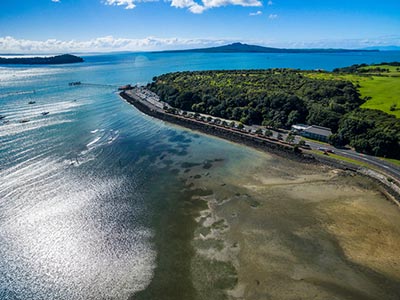 Ōkahu Bay, on the outskirts of Tāmaki Makaurau, Auckland (the financial capital of New Zealand) is the ancestral home of the Ngāti Whātua Ōrākei people but its health has been in decline since the beginning of the 20th century, in large part due to development and urbanization by the Pākehā (European settlers). In 1914 an enormous sewer pipe was constructed to divert hospital and industrial waste from Auckland to this isolated bay far from the urban center. From 1914 to 1960 this pipe emptied untreated wastewater, including raw sewage, medical waste, and industrial byproducts, into the Ōkahu Bay, which was part of a vast and robust tidal estuary system that defines the region. Kahui-McConnell explains that the Bay went from being a pātaka (food pantry) for the local people, to being a “cesspool of typhoid, fetuses and amputations.” Many local people, as well as visitors to this area, died of disease and illnesses caused by the contamination filling the Bay.
Ōkahu Bay, on the outskirts of Tāmaki Makaurau, Auckland (the financial capital of New Zealand) is the ancestral home of the Ngāti Whātua Ōrākei people but its health has been in decline since the beginning of the 20th century, in large part due to development and urbanization by the Pākehā (European settlers). In 1914 an enormous sewer pipe was constructed to divert hospital and industrial waste from Auckland to this isolated bay far from the urban center. From 1914 to 1960 this pipe emptied untreated wastewater, including raw sewage, medical waste, and industrial byproducts, into the Ōkahu Bay, which was part of a vast and robust tidal estuary system that defines the region. Kahui-McConnell explains that the Bay went from being a pātaka (food pantry) for the local people, to being a “cesspool of typhoid, fetuses and amputations.” Many local people, as well as visitors to this area, died of disease and illnesses caused by the contamination filling the Bay.
To add insult to injury, streams across the region were piped in the 1930s, and the Ngāti Whātua Ōrākei people’s marae (cultural hub) was burned down in the 1950s to prepare for a visit from the Queen of England. Then, from the 1960s to the early 2000s, urban development and the addition of a new marina contributed to further contamination of the Bay with increased sediment, nutrients, and altered tidal flows.
When Kahui-McConnell started working with the Ngāti Whātua Ōrākei in 2007, the primary Māori indicator they had identified for ecological health of the Bay was the following: “A healthy bay has our whānau in it.” In other words, the Bay is healthy when the people can walk in it, swim in it, fish in it, and connect with it as they had over generations prior to the devastation and contamination. When she began, Ōkahu Bay no longer had the mauri that defined not only the water itself but the people; it was considered mauri mate: dead. The whānau no longer felt safe to harvest or practice their cultural traditions in the Bay, an absolute disconnect that was effectively killing their culture as well as the ecosystems their culture was tied to.
Kahui-McConnell started documenting the environmental health indicators with the community. She began the applied work with the children of the community having them perform shellfish monitoring to understand the conditions of the kaimoana (seafood). What followed were activities where those same children participated in upland forest restoration plantings on the headlands above the Bay with local seeds collected using traditional practices based on the rituals of the Māori maramataka, their lunar calendar. The youngsters were taught the connections from the headwaters of the catchment to the sea, and along the way were helping with restoration and monitoring. The Ōkahu Catchment Ecological Restoration Plan (2012), which resulted from this work, laid out strategies for restoring the mauri of the Bay through mātauranga (indigenous ecological knowledge).
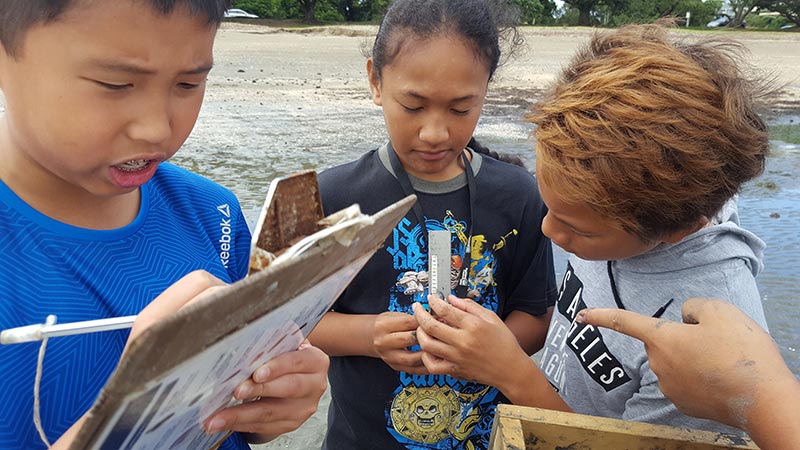
Kahui-McConnell has continued to work with the community, developing in the following years a series of implementation projects. She explained that after the initial shellfish monitoring many community members would approach her to ask about the Bay’s conditions and she sensed that their connection with the moana was growing and being restored. One aunty asked, “So what are you doing with the water, then?”
Kahui-McConnell and Auckland-based marine biologist, Dr. Brendan Dunphy, came upon the idea of looking to mussels as bioremediation agents in the Bay. The kutai, or green-lipped mussel (Perna canaliculus), was an introduced species but it would meet the cultural indicators of the community while helping address the water quality issues. Kahui-McConnell’s mentor in the community, Kaumata Tamaiti Tamaariki, was an elder who had been fisherman of Ngāti Whātua Ōrākei from the age of eight. He and his brother knew, through a lifetime of experience, “where every current was and what every surface was.” Having his guidance and his approval of their proposed restoration methods allowed for the project to go forward. He advised on everything, from the locations for the mussels to the ways in which the restoration might take shape, giving his approval or disapproval along the way with constructive and supportive feedback.
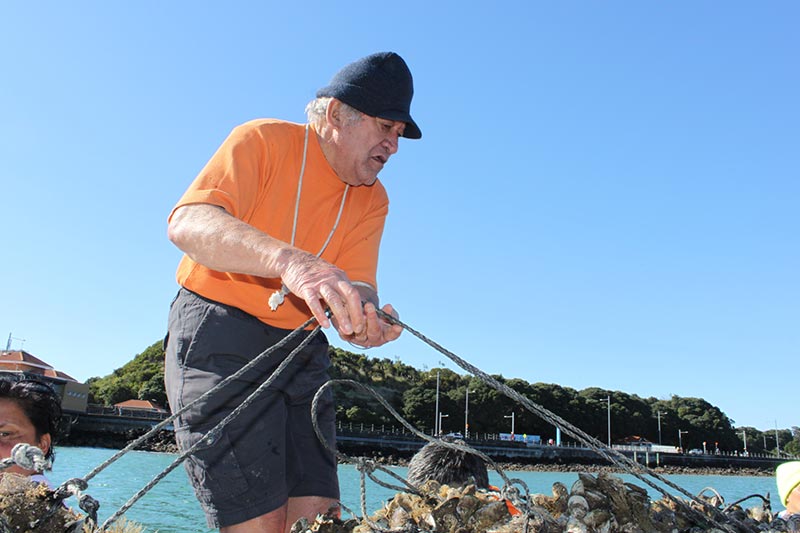
In 2017 they developed an innovative approach that has its roots in biomimicry. Kahui-McConnell and her collaborators had been contemplating the way that gills work in the filtration of water. Why not develop a system that similarly suspended lines of filtration material (rope with mussel spat) in the water column? Working again with her mentor, marine biologists, and the community’s traditional weavers, they developed a strategy using taura, a traditional style rope, woven from native flax harvested from the same headland where the forest restoration had been implemented.
The weavers were adamant that the rope would hold up over time in the aquatic conditions, as they had found this rope on old waka (boats) that had lasted many, many years. The weavers took great pride in the crafting of these 100-meter lengths of rope and did all the work for free. The rope was threaded into a cotton sock filled with donated mussels, seeded with spat, to create curtains of mussel rope that wound around the pylons at the wharf in the Bay. In the fall of 2017 the whānau from the Ngāti Whātua Ōrākei launched this innovative technology, taking their waka, after the ceremonial blowing of the putata (conch shell), out to place the ropes.
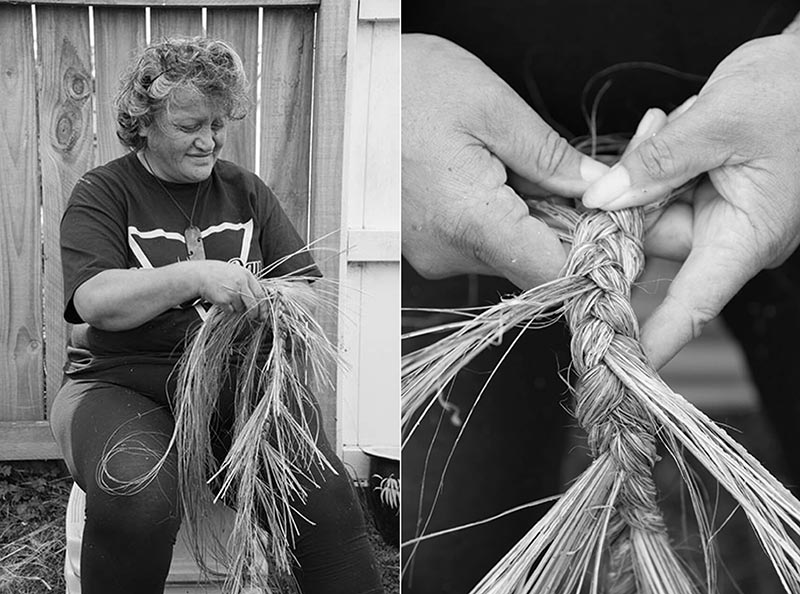
Karakia for the future
Today Kahui-McConnell continues to work with the community on the next round of restoration strategies, including seagrass plantings and new reef designs for future mussel installations. She notes that the key to Māori science is “to bring whānau a space where they can express what their visions are” for the whenua and moana. “To be a mindful practitioner I try to leave my ego aside and allow them to direct the science and the restoration.” Everything she works on tries to balance environmental and social outcomes, “keeping the mauri and the manākitanga, the relationships we have with one another and with the ecosystems, at the forefront”
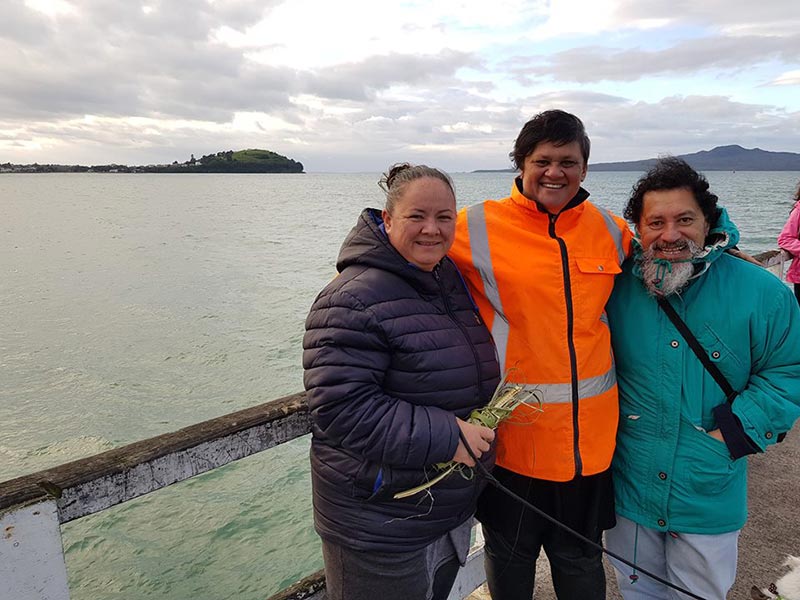
In building social capital within the Māori community, Kahui-McConnell notes the importance of inspiring youth and teaching them using traditional methods and rituals, the knowledge of the kaumātua and Tōhunga (elders and knowledgeable teachers), and native language. She notes that in this time of the global recognition of the strength of women in our communities, the Māori wahine (female leaders) are also taking it upon themselves to strengthen the Māori education system to continue to reflect mātauranga, seeking funding and building their own science education programs.
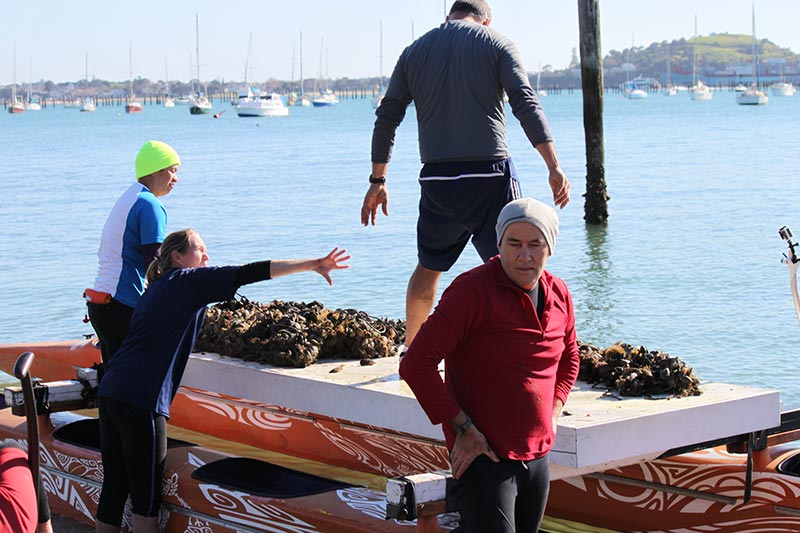
Her advice to practitioners working with indigenous populations is four-fold. “We must be humble in our approach, respectful of indigenous knowledge, innovative in our thought processes where we can allow for different approaches and different philosophies, and, where we can, hand over the power to those who are outside of science.” She explains that it is about respect and taking the time to understand the landscape and people, and letting “the land speak, bringing the voice forward for the land and the water.”
Post script: Speaking with Richelle Kahui-McConnell is like taking a master class in a community-based design approach to ecological planning & restoration. In the preparation of this piece it was a great honor to speak with her at some length about her work, the Māori people, and the stories and traditions that illuminate their heritage. She is a natural storyteller, reflecting both constant wonder and joy in her work, which appears to be more than just a job –it is a calling. The Māori language plays such an important role in the culture and in the work she does that it seems only fitting to include as much of it as possible to provide a small window into the ecological and cultural lives of the people.
